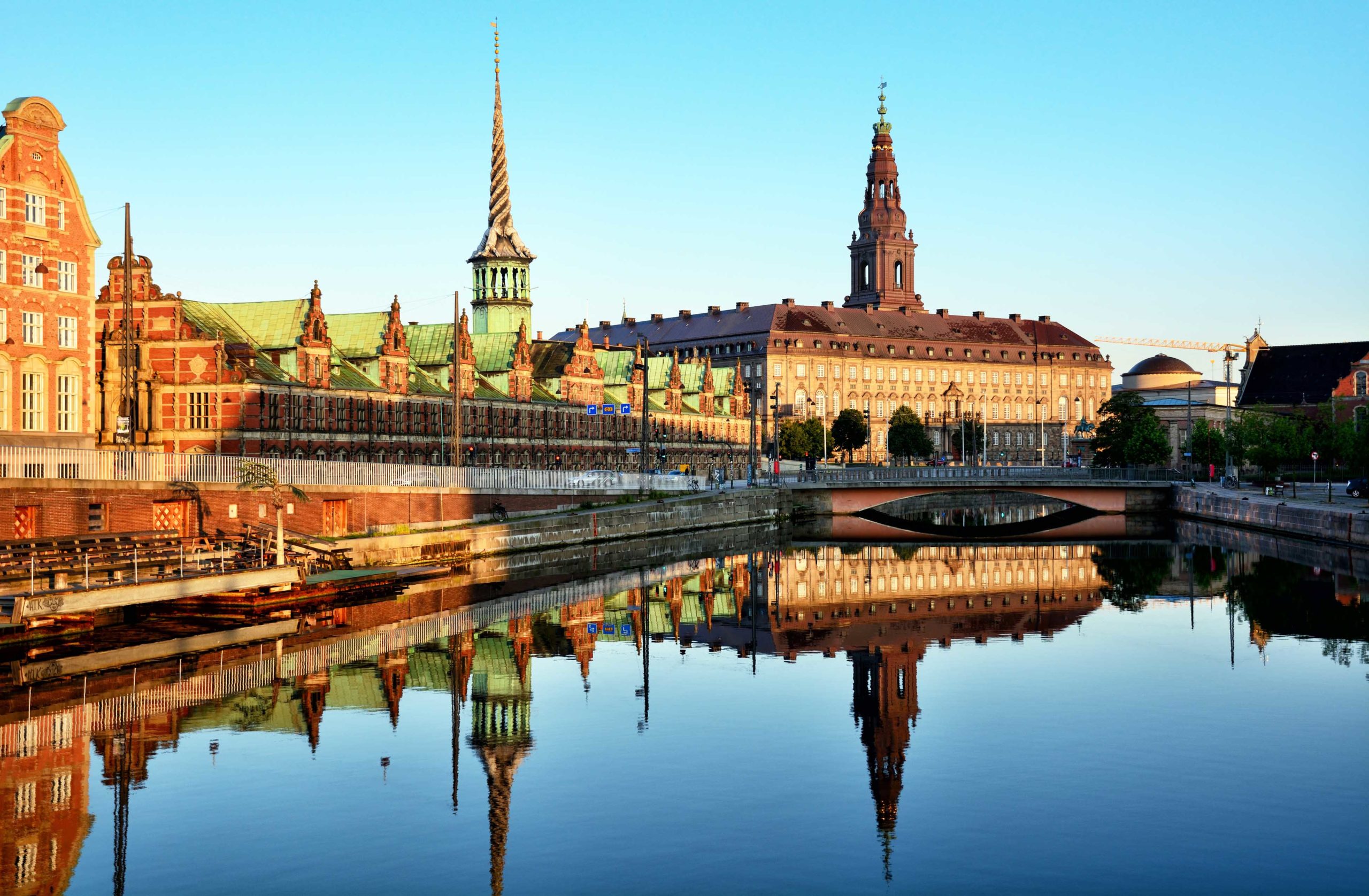- Capital: Copenhagen
- Time Zone: GMT +1
- Currency: Danish Krone
Denmark is the smallest of the Scandinavian countries and is certainly the most southern in its geographical position. Its people are livelier and warm Scandinavians, always ready to drink, talk, walk outdoors, and enjoy the sunshine. The Danish monarchy, one of the world’s oldest, is a very popular institution fully anchored in the Danish society. Beyond the capital and the bigger cities, Denmark offers a mix of lively towns such as Ribe and Odense plus rural countryside, medieval churches, Renaissance castles and tidy 18th-century villages. Neolithic dolmen, preserved 2000-year-old “bog people”, and impressive Viking ruins are just some of the remnants of the nation’s long and fascinating history.
Cities
Copenhagen
The coolest, most cosmopolitan, most exciting and, yes, Danny Kaye was right, the most wonderful city in Scandinavia welcome to Copenhagen (København). These days the Danish capital is blossoming. There is a spring in its step borne from a mixture of some brave new architecture, continued prosperity and a burgeoning confidence in its own charms. There are more cafés and restaurants than ever! Copenhagen is clean, safe and ridiculously easy to get to know, the locals all speak superb English and the transport system makes London’s look like it’s on the verge of a nervous breakdown. It usually makes the top five, if not the top spot, as the “most livable city”!
The Funen
Funen (Fyn) is engagingly pretty, with rural scenery, thatched farmhouses and a surprisingly varied set of attractions. The chirpy modern city of Odense is Hans Christian Andersen crazy – sculptures of trolls lounge on street corners, duckling-and-swan mobiles dangle from gift shop windows, and even the lights at pedestrian crossings feature a certain well-known fairy-tale writer. Even if you scoff at fantastical fabrications, Odense will have something to hold you – old steam engines, manatees at the zoo, imposing churches and cathedrals, art galleries, open-air museums and chilledout boat rides on the river.
Jutland Peninsula
One of Jutland’s most prized areas is the Lake District (Søhøjlandet), as it dazzles with hills, forests and lakes not found anywhere else in Denmark. This region is home to Denmark’s longest river: the Gudenå, Jutland’s biggest lake (Mossø) and Denmark’s highest point, Ejer. In many countries, visiting the land would probably be a passport to gob smacking scenery and have you reaching for your camera and grasping for superlatives. Not in Denmark! Instead of craning your neck at sky-reaching peaks, here you can marvel over the gentle nature, neat and tame, and the superbly pretty scenery.
Language
Danish and English.
Electricity
The electricity is 220 volts; therefore, an adapter and/or converter will be required.
Entry requirements
Kindly make sure to have the proper documents required to enter the countries you are visiting. Please refer to www.travel.gc.ca for updated information. Regarding visas, you can refer to the link: www.travel.gc.ca/travelling/advisories.
Failure to obtain these documents prior to travel can result in being denied entry or exit from the country.
Communication
International access code (exit code in Europe): 00 International dialing code: 45 If you are calling from any other European country, the international dialing code 45 is only required to call Denmark from abroad. So it will be: 00 45 and local phone number. Concerning national calls made in Denmark, it is not necessary to dial the 45 country code. If you are calling from Canada, please dial 011, then 45 and finally the local phone number in Denmark.


